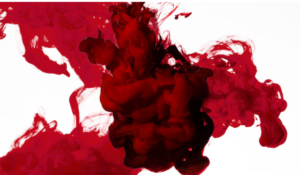How to Create and Capture Stunning Ink Flow Photos

Ink flow is a fascinating art form which captures the fluid textures and shapes created when ink or paint are poured onto water. You can create stunning images that look like underwater sculptures with the right equipment and technique. This guide will explore the steps you need to take in order to master ink-flow photography and unleash your creative side.
Ink Flow Photography

Ink flow photography is a great way to capture fluid dynamics. Pouring ink onto water creates intricate textures and shapes, which transform the liquid into captivating sculptures. This art form is popular because it creates visually stunning images. It evokes a sense wonder and fascination.
Essential Equipment
You’ll need some key equipment to get started in ink flow photography. For the best results, a glass tank with flat panels is recommended. Also, collect inks or paints in different colors, as well as lighting sources like speedlights and a camera that has a standard lens to capture the action.
How to Set Up the Tank

Fill your tank with water, and use a squeegee or similar tool to remove air bubbles. Select a place with plenty of space and easy access a sink to clean up. Consider adding a backdrop to your tank photos.
Choose the Ink or paint
To achieve desired effects, experiment with different media such as ink, food coloring, or paint mixed with glycerin. You can adjust the viscosity to create beautiful patterns and shapes by controlling the flow dynamics.
Ideal Lighting Setup
Lighting is a key factor in ink-flow photography. Experiment with different options for lighting to find the best setup. Placed on either side of your tank, speedlights can be used to create flattering sidelight and reduce flare. You need enough light to freeze movement and capture fine details.
Composing the Shot
Position your camera with a standard-lens on a tripod and compose the shot so that it includes the entire tank. Live View allows you to manually focus on a certain point within the tank. This will ensure that your photos are sharp and clear.
Camera Settings
To get the best exposure, adjust your camera settings including shutter speed, aperture and ISO. Shoot in continuous burst to capture multiple photos in one shot. Experiment with different settings for the desired effect.
Use an External Shutter Release
Invest in a remote shutter release to trigger the camera remotely while you pour the ink. You can concentrate on the ink pouring without worrying about pressing the shutter.
How to clean and maintain the tank
Clean the tank thoroughly between shots in order to keep it clear and remove any residue left from previous pours. The tank should be emptied and rinsed in the sink. Wipe down the glass with a rag to remove fingerprints or smudges.
Experimentation, Creativity and Innovation

Do not be afraid to try different colors, pouring methods, and compositions in order to create captivating and unique ink flow photos. Let your imagination soar as you embrace the creative process.
Bonus Tip: Post Processing
Consider using post-processing to improve the final result. Adjusting the white and black sliders will improve contrast and dynamic range. Using a healing tool to remove bubbles will clean up your image. Try rotating the image to add artistic effects.
You can create stunning ink-flow photographs in your home by following these tips and embracing the experimentation. Explore, experiment, and unleash creativity to capture fluid sculptures with ink flow photographs.


